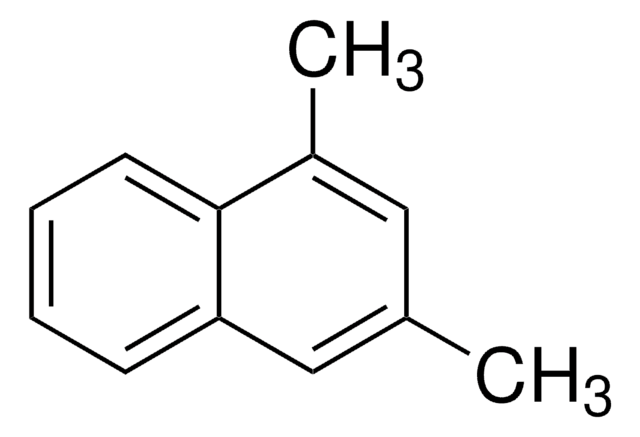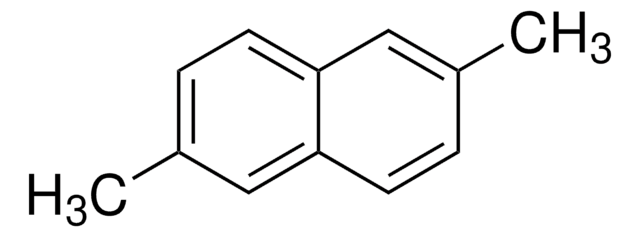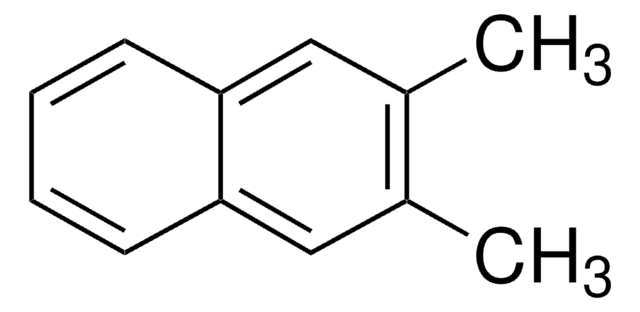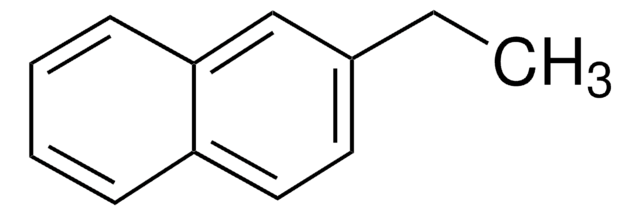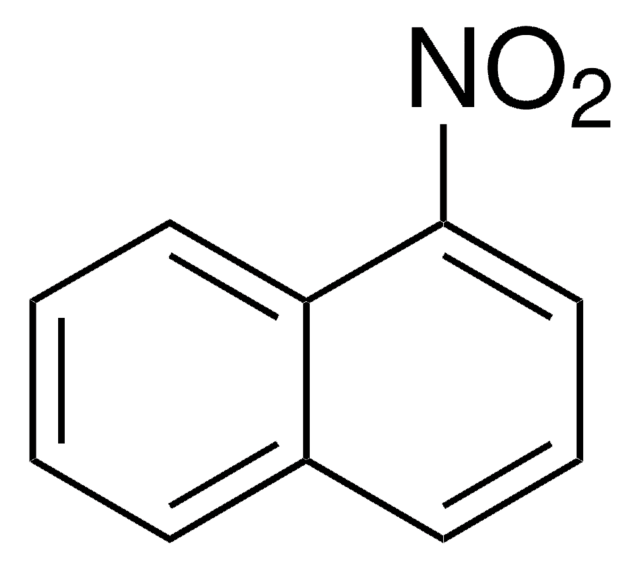All Photos(1)
About This Item
Linear Formula:
C10H6(CH3)2
CAS Number:
Molecular Weight:
156.22
Beilstein:
1854429
EC Number:
MDL number:
UNSPSC Code:
12352100
PubChem Substance ID:
NACRES:
NA.22
Recommended Products
Quality Level
Assay
99%
refractive index
n20/D 1.606 (lit.)
bp
265-266 °C (lit.)
mp
−17-−16 °C (lit.)
density
1.002 g/mL at 25 °C (lit.)
SMILES string
Cc1ccc2c(C)cccc2c1
InChI
1S/C12H12/c1-9-6-7-12-10(2)4-3-5-11(12)8-9/h3-8H,1-2H3
InChI key
CBMXCNPQDUJNHT-UHFFFAOYSA-N
Gene Information
human ... CYP1A2(1544)
Looking for similar products? Visit Product Comparison Guide
Storage Class Code
10 - Combustible liquids
WGK
WGK 3
Flash Point(F)
233.6 °F - closed cup
Flash Point(C)
112 °C - closed cup
Personal Protective Equipment
dust mask type N95 (US), Eyeshields, Gloves
Choose from one of the most recent versions:
Already Own This Product?
Find documentation for the products that you have recently purchased in the Document Library.
The assessment of some volatile organic compounds as sprout suppressants for ware and seed potatoes.
Beveridge JL, et al.
Potato Research, 24(1), 61-76 (1981)
Loaded liquid scintillators based on 1, 6-dimethylnaphthalene and 1-methylnaphthalene.
Koike Y and Yamamoto K.
Nuclear Instruments and Methods in Physics Research, 84(1), 24-28 (1970)
Nien-Hsin Kao et al.
Marine pollution bulletin, 97(1-2), 319-332 (2015-06-08)
Three fishing harbors were investigated to study the polycyclic aromatic hydrocarbons in the sediments and trace possible anthropogenic sources by identification of cyclic terpenoid biomarkers. Seventeen terpanes, 10 steranes and 10 bicyclic sesquiterpanes in the marine diesel and the three
Laura E Korhonen et al.
Journal of medicinal chemistry, 48(11), 3808-3815 (2005-05-27)
The purpose of this study was to determine the cytochrome P450 1A2 (CYP1A2) inhibition potencies of structurally diverse compounds to create a comprehensive three-dimensional quantitative structure-activity relationship (3D-QSAR) model of CYP1A2 inhibitors and to use this model to predict the
F Aladar Bencsath et al.
Analytical and bioanalytical chemistry, 407(14), 4079-4090 (2015-03-23)
A headspace solid-phase microextraction gas chromatography-mass spectrometry (SPME GC-MS) method is described, to screen seafood for volatile organic compounds (VOCs) associated with petrochemical taint. VOCs are extracted from the headspace of heated sample homogenates by adsorption onto a SPME fiber
Our team of scientists has experience in all areas of research including Life Science, Material Science, Chemical Synthesis, Chromatography, Analytical and many others.
Contact Technical Service